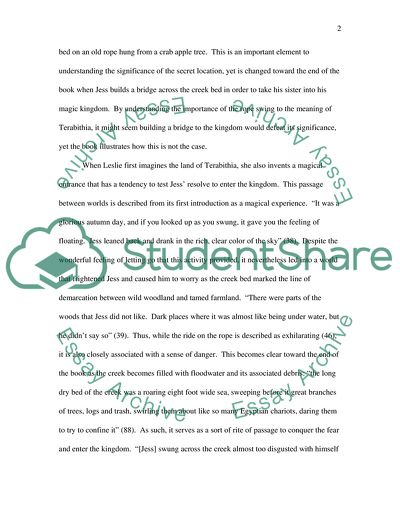Paterson's Bridge to Terabithia Book Report/Review Example | Topics and Well Written Essays - 1500 words. https://studentshare.org/literature/1713338-bridge-to-terabithia
Paterson'S Bridge to Terabithia Book Report/Review Example | Topics and Well Written Essays - 1500 Words. https://studentshare.org/literature/1713338-bridge-to-terabithia.


